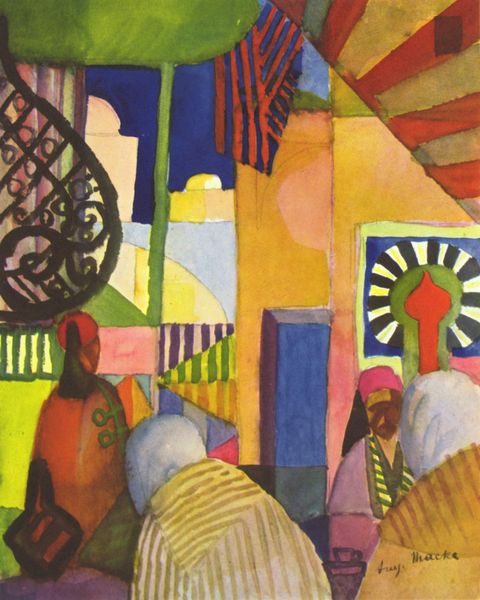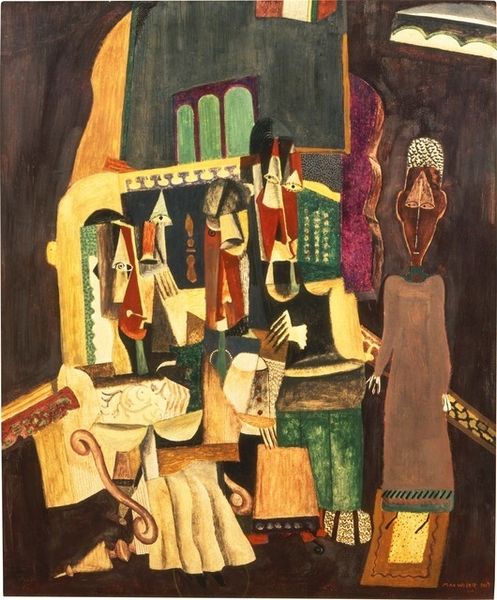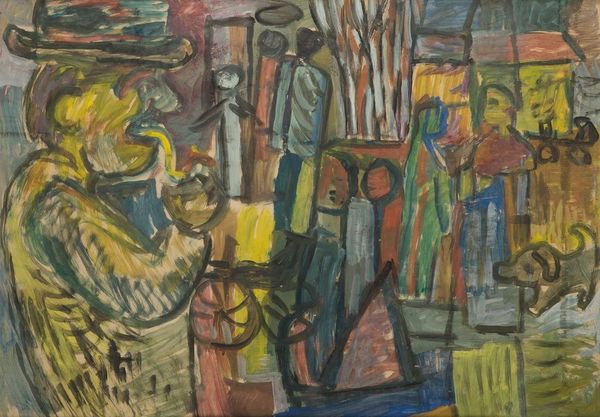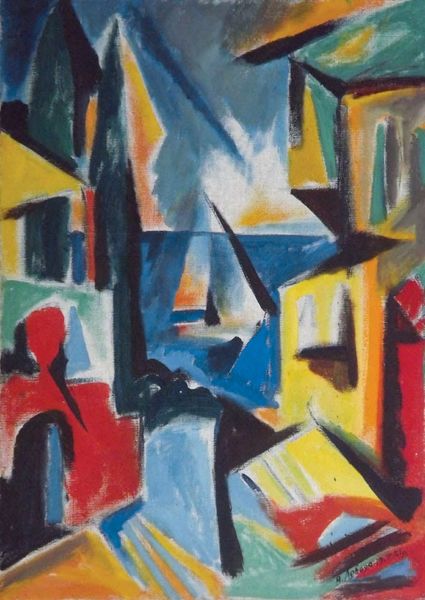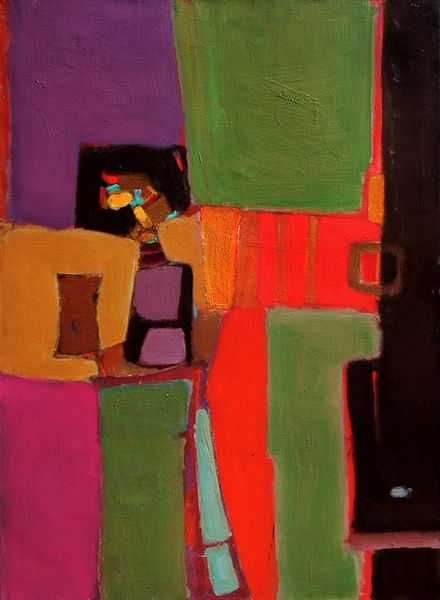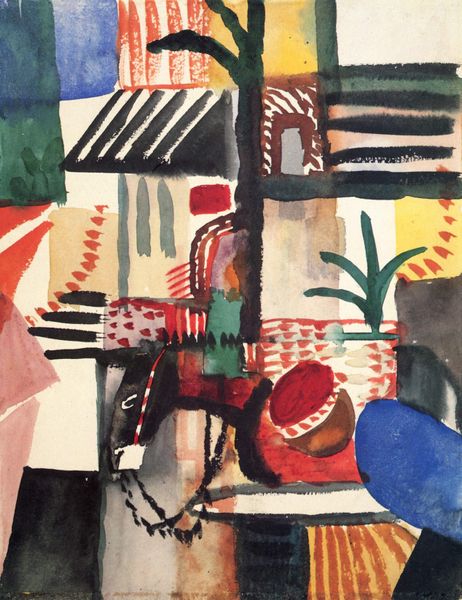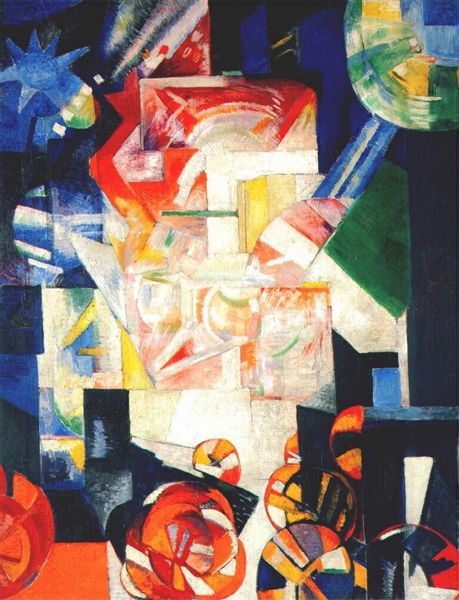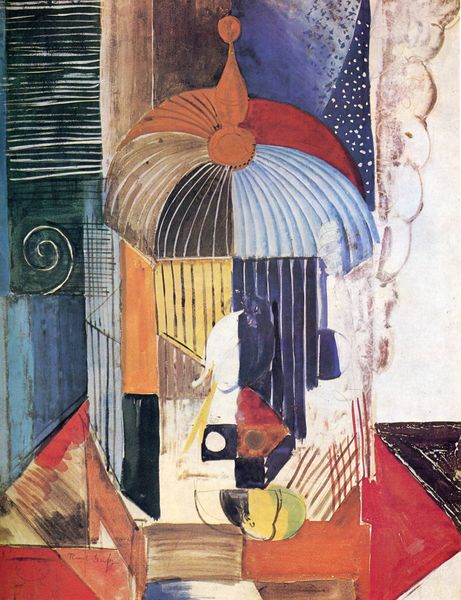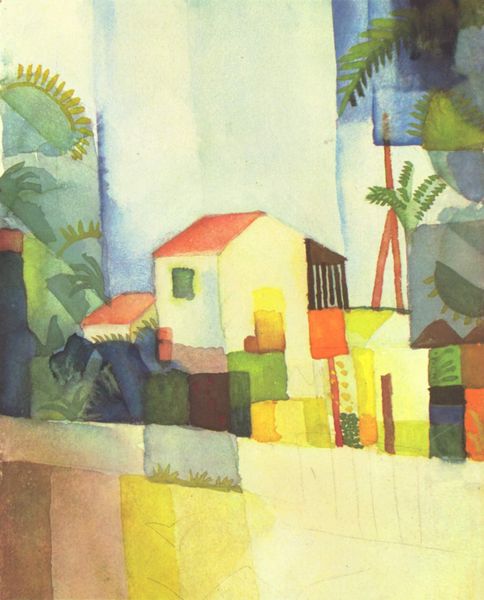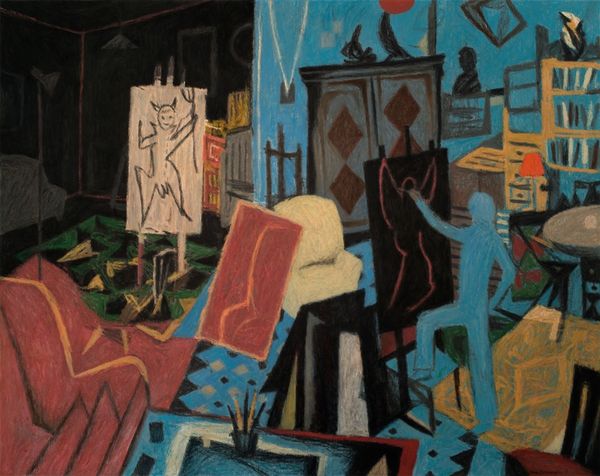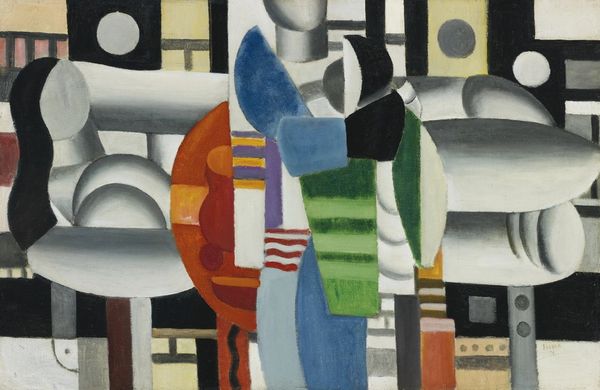
watercolor
#
painted
#
watercolor
#
geometric
#
expressionism
#
orientalism
Dimensions: 20 x 26 cm
Copyright: Public domain
Editor: This is August Macke's "Dealer with Jugs," a watercolor from 1914. I’m immediately struck by the flattened perspective and how the geometric shapes seem to vibrate with color. How do you interpret this work, especially considering the time it was created? Curator: This piece speaks volumes about the orientalist gaze prevalent in early 20th-century European art. Macke, like many of his contemporaries, was deeply influenced by travels to North Africa. The “dealer” is presented almost as a cipher, flattened, as you noticed, amidst these exoticized wares. Do you see a respectful cultural exchange or a problematic representation? Editor: That’s a good point. It feels a bit… reductive? I’m seeing "orientalism" tagged in the data, and I do feel that now, but I wasn’t necessarily my initial interpretation of the image. How does the Expressionist style contribute to this reading? Curator: Expressionism, with its emphasis on subjective experience and emotional intensity, here can be seen to heighten the artist's personal interpretation, almost a fantasy, of the "Orient." It moves away from direct representation and embraces a distorted reality that reinforces the exotic “other”. Think about the politics of representation - who has the power to represent whom and what are the implications? Editor: So, the vibrant colors and simplified forms aren't just aesthetic choices; they also underscore the artist's particular perspective on a culture not his own. Do you think it can it still have value today considering all that? Curator: Absolutely. Acknowledging and interrogating its problematic aspects is essential. We can learn so much about the complex relationship between Europe and the "Orient" through pieces like this, unpacking the power dynamics embedded within art history. By placing the artwork in conversation with its historical context, we can use this artwork as a stepping-stone for critical dialogues and deeper explorations. Editor: That’s really helpful, thank you. I think I see the piece in a new light now, as more than just a colourful painting, but also a social commentary and starting point for further examination.
Comments
No comments
Be the first to comment and join the conversation on the ultimate creative platform.
